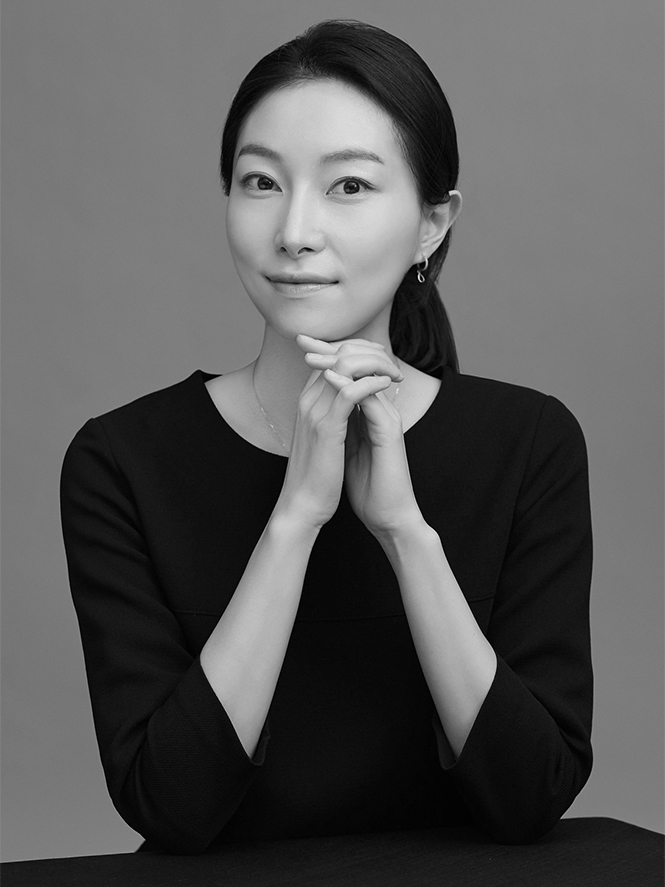수상자
이예슬
댄스앤미디어연구소 이사
수상소감
안녕하십니까?
창의융합디자인연구소에서 이렇게 뜻 깊고 영광스러운 상을 수상하게 되어 기쁩니다.
그동안 무용 분야의 발전과 저변확대를 위해서 많은 고심과 연구를 해왔습니다. 이 연구는 많은 사람들이 무용을 쉽게 접할 수 있는 시스템이 있었으면 하는 바람으로 아이디어를 구체화하고 학술적 가치와 의미를 생각한 것입니다. 부족함이 많지만 이번 기회를 바탕으로 더욱더 발전시켜 무용 활성화에 실질적인 기여를 할 수 있도록 노력하겠습니다.
모두가 춤으로 하나 되는 세상을 기대하며, 논문에 도움을 주신 모든 분들께 감사의 말씀을 전합니다.
이력
댄스앤미디어연구소 이사
논문
초록
본 연구는 변화하는 교육환경에 따라 유아의 비대면 발레 체험 시스템을 제안한다. 본 연구에서 제안하는 시스템은 머신러닝 기반으로 유아의 포즈를 인식하여 그와 유사한 발레 동작을 인공지능 튜터가 시연함으로써 유아가 아바타를 통해 자연스럽게 발레를 체험할 수 있도록 유도하는 것이다. 이를 기획하기 위하여 비대면으로 이루어지고 있는 유아 무용 교육 사례를 살펴보고, 유아를 위한 인공지능 튜터 시스템 개발을 위한 방향과 세부 절차를 제안하는 것을 연구의 목적으로 설정하였다. 그 결과 관련 연구 자료에서는 무용 동작의 데이터화, ICT 기술을 융합한 초연결·초지능·초실감적인 발레 실기 교육, 율동 로봇과 유아 상호작용의 중요성, 온라인 교육에 즉각 반응할 수 있는 일치성이 강조되었으며, 실제 개발 사례에서는 아바타를 통한 증강현실 기반의 창의 발레 교육, 인공지능 기반 클래식 발레 교육 프로그램이 개발된 것으로 조사되었다. 관련 연구 및 사례 조사 결과를 바탕으로 본 시스템의 작동 과정을 첫째, 아바타 생성, 둘째, 인공지능 튜터와의 상호작용, 셋째, 유아의 포즈 인식, 넷째, 발레 동작 시연 및 따라하기, 다섯째, 유아의 움직임을 기록한 동영상 감상의 단계로 구성하였다. 더불어 해당 서비스를 실제 구현하기 위한 가이드를 제시하였다. 본 연구에서 제안하는 시스템을 통해 향후 교육산업 현장에서 이와 관련된 무용 체험 및 교육 시스템을 개발하는 데에 실질적인 가이드를 제공할 수 있을 것이며, 나아가 발레를 통한 유아의 건전한 성장 발달과 발레 예술의 저변확대에 기여할 수 있을 것이다.
Abstract
This study proposes a non-face-to-face ballet experience system for toddlers in order to respond to a rapidly changing educational environment worldwide. The system proposed in this study encourages toddlers to naturally participate in ballet by using avatars and recognizing the children’s poses based on machine learning, following which similar ballet movements are demonstrated by artificial intelligence-based tutors. This study aimed to examine non-face-to-face cases of ballet instruction in early-childhood dance education and suggest directions and detailed procedures for developing an artificial intelligence tutoring system for youngsters. Accordingly, related research was conducted and the data emphasized the datafication of dance movements, hyper-connection, superintelligence, surreal ballet practical education blended with ICT technology, and the importance of rhythmic robot and infant interaction. Existing cases of non-face-to-face ballet education were studied, which were found to include augmented reality-based creative ballet education and AI-based classic ballet education. Based on the results of related studies and case studies, an outline for this system was designed, which consisted of first, avatar generation, second, interaction with an artificial intelligence tutor, third, pose recognition of kids, fourth, ballet movement demonstration and dancing, and fifth, video viewing. In addition, a guide for implementing the service was designed. The system proposed in this study provides practical guidance on enhancing children’s dance experiences and developing an adequate educational system in the future, which will further contribute to the sound development of toddlers and expansion of the ballet artform.
